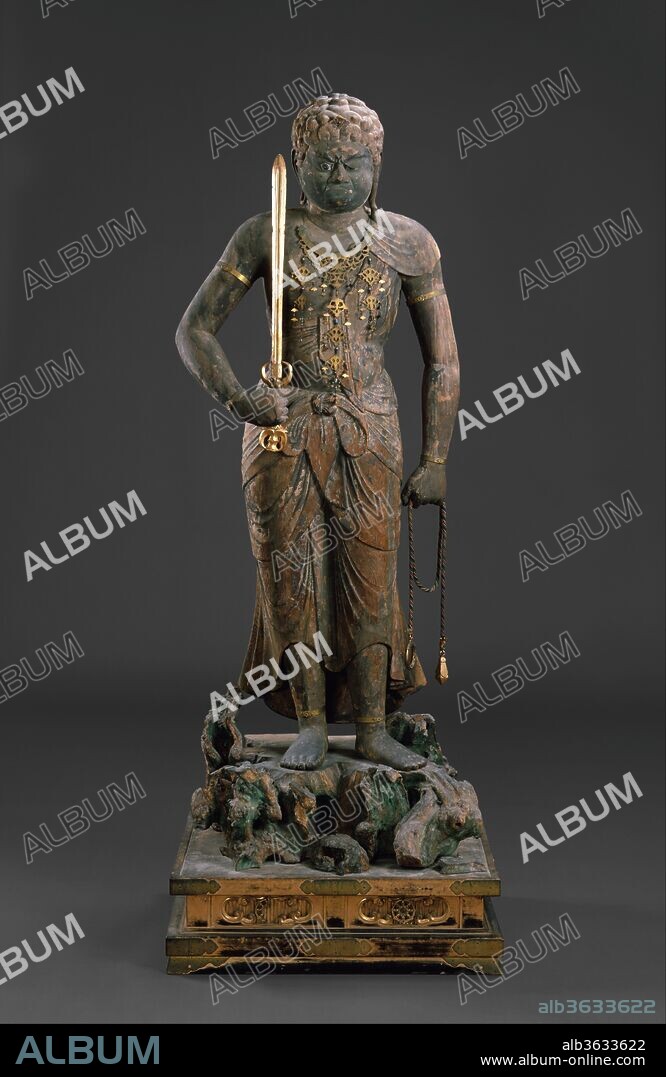alb3633622
Fudo Myoo (Achala-vidyaraja)

|
Añadir a otro lightbox |
|
Añadir a otro lightbox |



¿Ya tienes cuenta? Iniciar sesión
¿No tienes cuenta? Regístrate
Compra esta imagen.
Selecciona el uso:

Título:
Fudo Myoo (Achala-vidyaraja)
Descripción:
Ver traducción automática
Fudo Myoo (Achala-vidyaraja). Culture: Japan. Dimensions: H. 63 3/4 in. (162 cm). Date: 12th century.
Fudo Myoo is the most widely represented of the Buddhist deities known as Myoo, or Kings of Brightness. A fierce protector of the Buddhist Law, he is a direct emanation of the Buddha Dainichi Nyorai, the principal Buddha of Esoteric Buddhism. The first sculptures of Fudo made in Japan were seated, but standing sculptures like this one were carved beginning in the eleventh century. Fudo uses his sword to cut through ignorance and his lasso to reign in those who would block the path to enlightenment. The heavy weight of the shoulders and back is planted firmly on the stiffened legs, appropriate for a deity whose name means the "Immovable."
This statue, originally composed of six hollowed-out pieces of wood, was formerly the central icon of the Kuhonji Gomado in Funasaka, twenty miles northwest of Kyoto.
Técnica/material:
Joined-woodblock construction with traces of color and cut-gold
Periodo:
Heian period (794-1185)
Museo:
Metropolitan Museum of Art, New York, USA
Crédito:
Album / Metropolitan Museum of Art, NY
Autorizaciones:
Modelo: No - Propiedad: No
¿Preguntas relacionadas con los derechos?
¿Preguntas relacionadas con los derechos?
Tamaño imagen:
2662 x 4094 px | 31.2 MB
Tamaño impresión:
22.5 x 34.7 cm | 8.9 x 13.6 in (300 dpi)
Palabras clave:
 Pinterest
Pinterest Twitter
Twitter Facebook
Facebook Copiar enlace
Copiar enlace Email
Email
